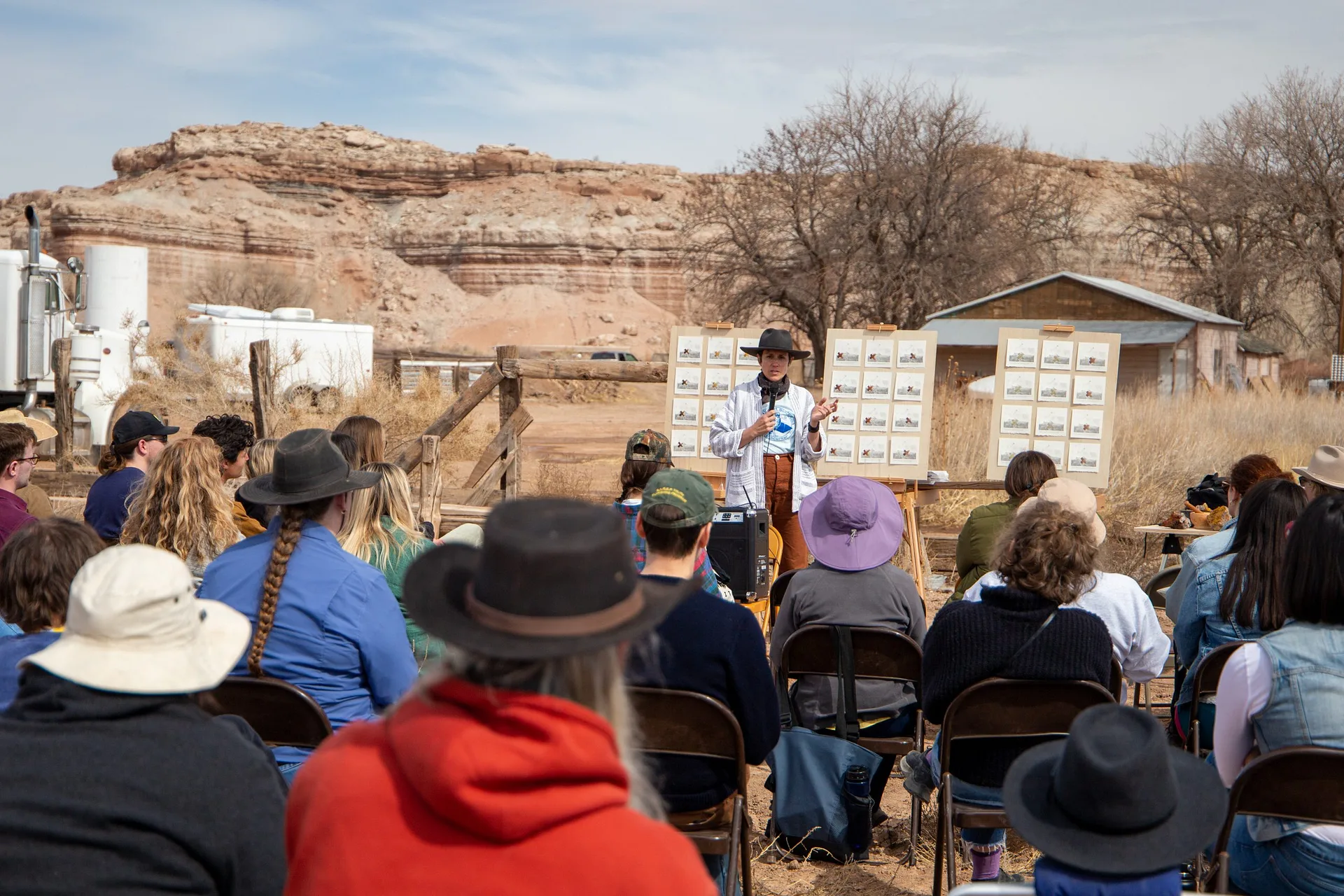
Rethinking Rural/Urban Dichotomies at the Epicenter Spring Summit
Community

Utah is home to an art scene that stretches across the state, with subversive art pockets in unlikely places, but sometimes, Salt Lake City’s presence eclipses work and communities in smaller towns. Just outside of Moab is one such unassuming town, sandwiched between the prismatic Book Cliffs and the dusty railroad tracks—Green River. With a population of just under 1,000, Green River hosts the arts organization Epicenter, whose founders worked in Green River as AmeriCorps volunteers. 2022’s Spring Summit gave professionals from around the state an historic chance to collaborate, network and plan for the future.
“Understanding people’s interaction with landscape—including rural residents, tourists and working artists—was a theme many speakers explored.”
With a roster of talented and brilliant curators, arts administrators, artists, writers and civic architecture designers, the three-day Summit brought diverse individuals together from around the country. With keynotes and workshops each day that spotlighted issues impacting rural places, the Summit focused on how the arts, architecture and design can build small business and municipal initiatives. These small gatherings and happy hours gave everyone the chance to network and brainstorm in a casual and friendly environment. From the busy First Friday Art Stroll in Ogden to Ephraim—where Amy Jorgensen is a co-founder of the Granary Arts Center—the Summit gave curators from these growing areas a chance to talk about their successes and plans for the future.
The sunset welcome for Summit participants took place on top of the hill where the sculpture “Golden Ratio” looms. Australian artist Andrew Roger says of its creation, “I had a feeling of aloneness walking the land. You could walk in four directions and there were no fences. Nobody was going to shoot you. It was unbelievable land. I love the land and that feeling of aloneness and solitude.” Understanding people’s interaction with landscape—including rural residents, tourists and working artists—was a theme many speakers explored.

Elpitha Tsoutsounakis, a Cretan-American designer and Assistant Professor in the Design program at the University of Utah, explored her relationship with gathered Ochre pigments (iron-oxide minerals) in a keynote. The southern Utah landscape is filled with slag heaps, the result of historic mining, and this debris is repurposed in her work. The presentation challenged dichotomies like natural and man-made, showing how people and the environment are in complex relationships. In the past, humans seeking to extract resources haven’t valued the inherent dignity of “nonhuman” entities, like biological systems and mineral deposits. Now, this type of thinking is being challenged in many discussions about colonialism, exploring how we can rebalance in the face of a changing climate.
“Diverse voices from the community, whether from different neighborhoods or from small towns, emerged from the discussion, as the pandemic has highlighted many divides that exist in the state.”

But, in fact, in some cases looking to the past and traditions of communities closer to the land shows us how to preserve the tender relationship between people, plants, animals and earth—to balance instead of exploit. In the Natural Dye workshop, Erika Lynne Hanson (an interdisciplinary artist, researcher, and educator) and Katie Boué (a community marketing organizer turned gardener and cannabis advocate) showed participants how to interact with the chemical composition and unique growth of plants to create dyes.
Curators from major state institutions also talked about their dreams and visions for the future of museums, art spaces and galleries. “I think this was the first time this number and range of curators got together in one physical place,” said Jorgensen. Diverse voices from the community, whether from different neighborhoods or from small towns, emerged from the discussion, as the pandemic has highlighted many divides that exist in the state.
Some lines between academic disciplines, ways of life, artistic practices or ideas about community make the possibility of working together harder. Blurring these divisions and creating meaningful personal connections helps us meet challenges like the housing crisis around Moab and Green River or working to soften how people and legislatures interact with the natural Utah environment. These sorts of multidisciplinary meetings help unearth creative solutions for small businesses, municipal governments and makers. You can learn more about Epicenter and its mission here.
Read more pieces on Utah’s landscape:
The Rough Landscape of Women’s Existence in Land Body at Ogden Contemporary Arts
Don’t Observe, Conserve! Help Save Our Great Salt Lake